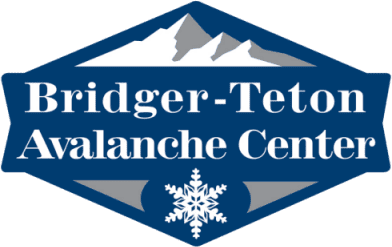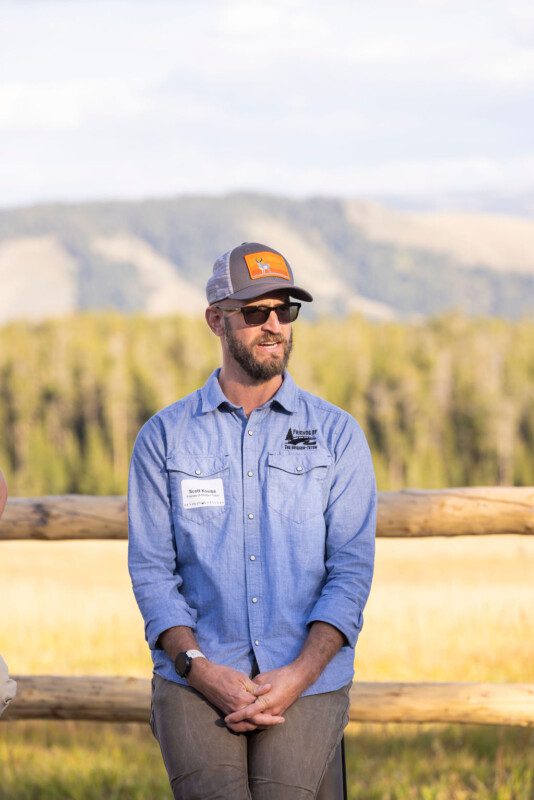“My favorite piece of backpacking equipment that is ‘extra’—not something every backpacker should or would have—is a machete,” Scott says. “I did my doctorate in the Amazon and learned how versatile machetes are there. Here, I keep it strapped to the side of my pack. I’ve used it to cut down small trees across trails and, on the rare instance I have a fire, it makes a good fire poker. Also, having it next to my bear spray when I’m sleeping is a comfort supplement.”
A research biologist with a PhD, Friends Executive Director Scott Kosiba moved to Wyoming in 2010 to work on a project studying sage grouse. He had never before visited the state, nor seen a sage grouse. A native of Michigan, Scott says, “I just fell in love with the area.” Several months after arriving in Wyoming, Scott met the Bridger-Teton National Forest employee in charge of the Jim Bridger Wilderness.
“There was a lot about Wyoming and its landscapes that struck me, but what really surprised me was the amount of public land,” Scott says. “I had no experience with public lands before I moved to Wyoming, and then, once here, it quickly became apparent what a fantastic concept it is—that there are lands set aside for the enjoyment of the public, for the benefit of wildlife, and to protect various resources.”
Shortly after meeting the BTNF staffer, Scott applied and was hired to work in the Jim Bridger Wilderness, one of three wilderness areas within the BTNF. “It was an amazing job and that is how I fell in love with the BTNF,” he says. He mostly patrolled the wilderness on foot and says, “on foot—backpacking—is still my favorite way to experience the wild places on the forest.” Scott often does this with his wife Madeline and their two dogs, Hank and Ruthie. Scott can also be found on the forest’s many mountain biking trails. “There are just so many ways to enjoy and experience the public lands that are the BTNF,” he says.
Scott joined Friends of the B-T in 2021. “When this opportunity came along, I saw it as the ideal way for me to give back to, and work on behalf of, the forest that I love so much,” he says. Since joining the nonprofit, Scott helped secure a $1 million grant from the Jackson Hole Travel & Tourism Board. Scott, FBT staff, partner organizations, and the BTNF itself have used this grant to grow the Ambassadors for Responsible Recreation program and for outreach and education about responsible recreation.
When not working on behalf of the BTNF or recreating on it—Scott is an avid shed hunter in addition to backpacker and mountain biker—Scott is spearheading the creation of an academic program focused on ecology, conservation, and community dialogue within the Greater Yellowstone Ecosystem.
How Scott recreates safely:
1. Route planning and sharing his plan: “I know where I’m going in advance, make sure people know my plan, have a map and compass with me, and then check in with them once I’m out,” he says. “I also carry an InReach [a GPS and location/SOS beacon] with me every time I’m out on the forest.
2. Bear safety: Scott can differentiate between black and grizzly bears, is engaged with his surroundings, is familiar with signs of bears, stores his food and attractants properly, and carries bear spray.
3. Fire safety: “For some people, a fire is part of camping, but, having seen what an escaped human-started fire can do, I almost never have a campfire when I’m in the backcountry,” he says. “It’s just not worth it.”


